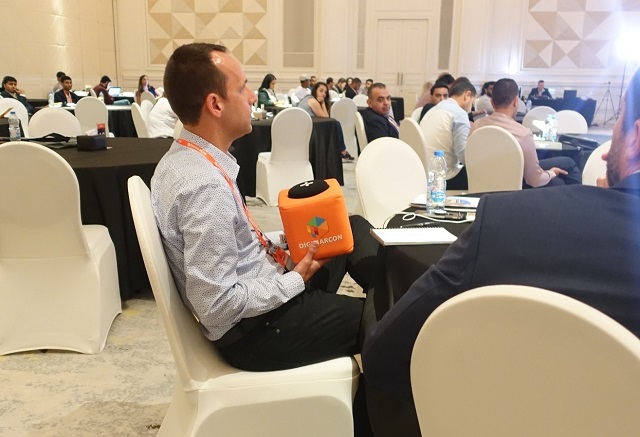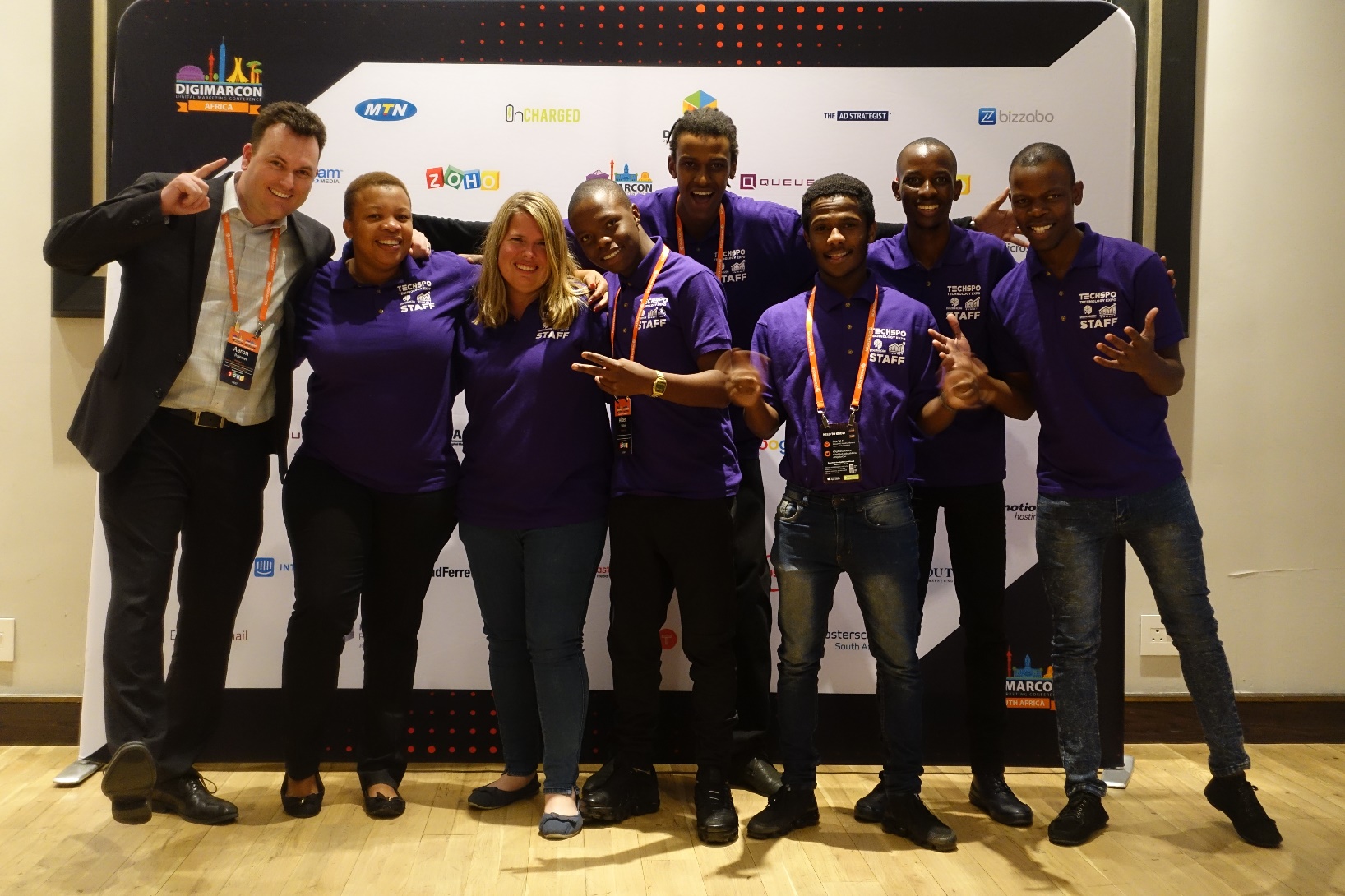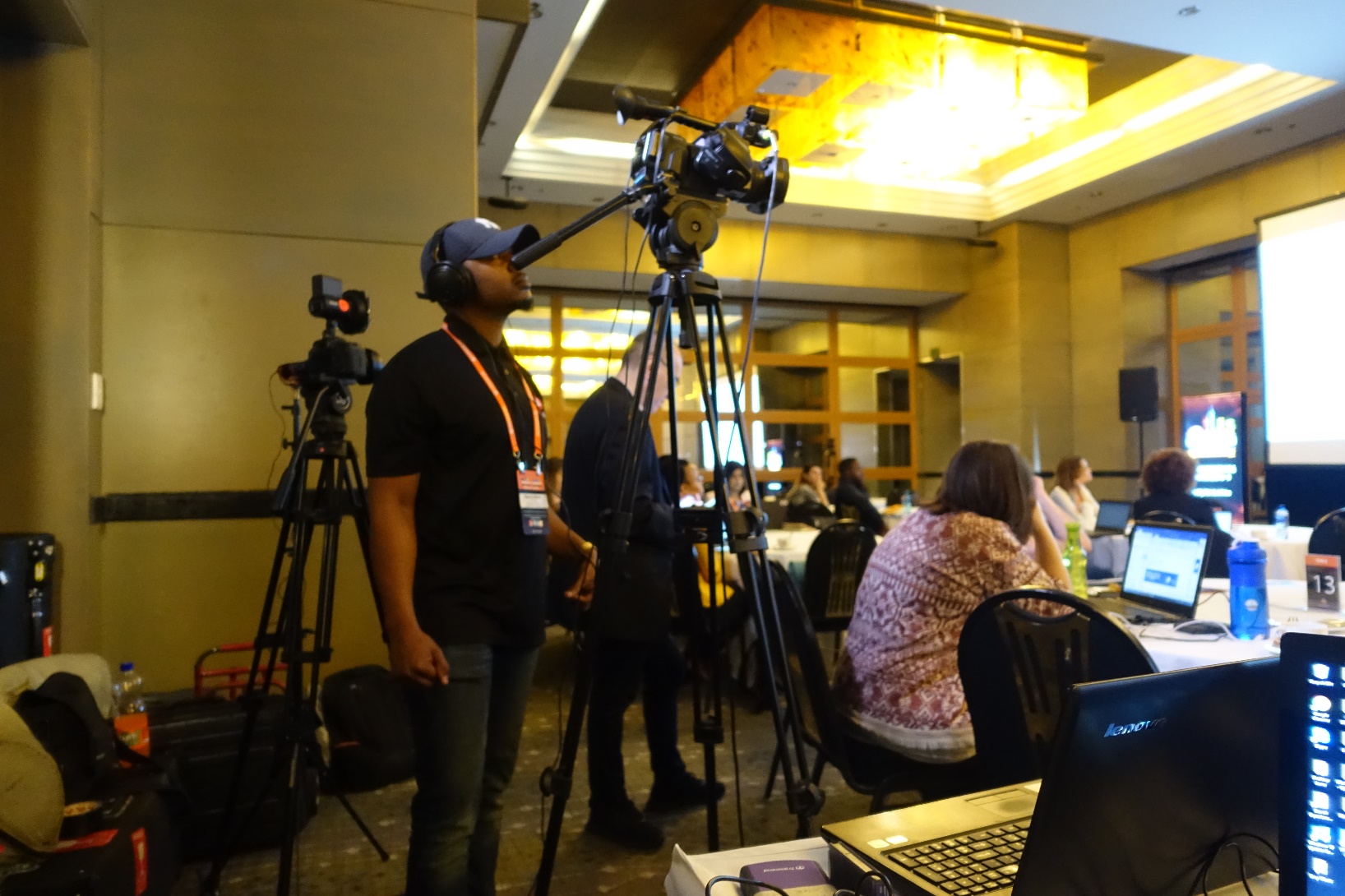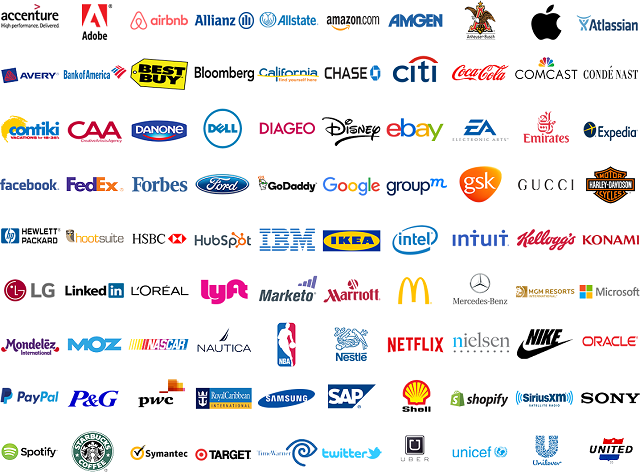Posts Tagged "Accessible Mobile Navigation"
Articles
- Best Marketing Conference Sponsorship
- What Does it Mean to Be an Exhibitor at a Conference?
- What Is the Biggest Social Media Conference?
- What Is an Innovation Conference?
- What Is a Typical B2B Event?
- What Are the Cloud Technology Events in 2025?
- Marketing Event Volunteer Opportunities: A Comprehensive Guide
- Digital Marketing Event Volunteer Opportunities Near Me
- What Does a Volunteer Do at a Conference?
- Is DigiMarCon Worth It?
- Is DigiMarCon Good?
- What is the Biggest Marketing Forum?
- What are Digital Marketing Conferences?
- Marketing Conference Exhibiting: Your Guide to Success
- Digital Summit Comparison: A Closer Look at DigiMarCon
- Digital Marketing Conference
- Digital Marketing Events: Your Guide to Success in 2025
- Marketing Conferences: Unlocking Your Business Potential in 2025
- What Is The Future of Digital Marketing in 2030?
- B2B Event Marketing Strategy: Unlocking Success For Your Business
- Why B2B Event Marketing?
- What Should a B2B Marketing Strategy Include?
- Top Marketing Conferences for 2025
- What Is the Future of Marketing in 2025?
Digital Marketing Conferences
- NORTH AMERICA
- DigiMarCon Cruise
(New Orleans, LA, USA) - DigiMarCon West
(Los Angeles, CA, USA) - DigiMarCon Northwest
(Seattle, WA, USA) - DigiMarCon Canada West
(Vancouver, BC, USA) - DigiMarCon Canada
(Toronto, ON, Canada) - DigiMarCon Canada East
(Montreal, QC, Canada) - DigiMarCon Florida
(Orlando, FL, USA) - DigiMarCon Gulf Coast
(Houston, TX, USA) - DigiMarCon Southern California
(San Diego, CA, USA) - DigiMarCon Midwest
(Chicago, IL, USA) - DigiMarCon Mid-South
(Nashville, TN, USA) - DigiMarCon Great Lakes
(Detroit, MI, USA) - DigiMarCon North
(Minneapolis, MN, USA) - DigiMarCon Central
(Kansas City, MO, USA) - DigiMarCon Texas
(Dallas, TX, USA) - DigiMarCon New England
(Boston, MA, USA) - DigiMarCon Mid-Atlantic
(Philadelphia, PA, USA) - DigiMarCon South Florida
(Miami, FL, USA) - DigiMarCon Southeast
(Atlanta, GA, USA) - DigiMarCon Central Florida
(Tampa, FL, USA) - DigiMarCon East
(New York, NY, USA) - DigiMarCon South Atlantic
(Charlotte, NC, USA) - DigiMarCon America
(Washington, D.C. USA) - DigiMarCon Northern California
(San Francisco, CA, USA) - DigiMarCon Rocky Mountains
(Denver, CO, USA) - DigiMarCon South
(San Antonio, TX, USA) - DigiMarCon Silicon Valley
(San Jose, CA, USA) - DigiMarCon Orange County
(Anaheim, CA, USA) - DigiMarCon Southwest
(Phoenix, AZ, USA) - DigiMarCon World
(Las Vegas, NV, USA)
- DigiMarCon Cruise
- LATIN AMERICA
- EUROPE
- MIDDLE EAST
- AFRICA
- ASIA PACIFIC
- DigiMarCon Hawaii & Pacific
(Honolulu, HI, USA) - DigiMarCon Asia & Japan
(Tokyo, Japan) - DigiMarCon New Zealand
(Auckland, New Zealand) - DigiMarCon Australia
(Sydney, Australia) - DigiMarCon Oceania
(Melbourne, Australia) - DigiMarCon Southeast Asia
(Singapore) - DigiMarCon India
(New Delhi, India) - DigiMarCon North Asia & China
(Shanghai, China)
- DigiMarCon Hawaii & Pacific
- VIRTUAL
Digital Marketing Blog
- Optimize Your Mobile Site for Better User Experience June 17, 2025
- Boost Your Brand with User-Generated Content (UGC) June 17, 2025
- Boost Your Rankings with On-Page Optimization June 17, 2025
- Unlock the Power of Local SEO for Your Business June 17, 2025

































Optimize Your Mobile Site for Better User Experience
In today’s digital world, having a responsive website is key for businesses to keep up. Most users visit websites on different devices. So, a smooth user experience is crucial for keeping people interested and converting them.
A well-designed site not only draws in visitors but also keeps them coming back. This boosts your business. This article will show you how to make your site better for users. We’ll cover important principles and design tips that affect user engagement.
Key Takeaways
Understanding Mobile Optimization
Mobile optimization is now a must in our digital world. Mobile devices are the main way people use the internet. Knowing how to optimize for mobile is key for businesses and developers to offer a great user experience.
What is Mobile Optimization?
Mobile optimization means making a website work well on mobile devices. It’s about creating a mobile-friendly design that fits smaller screens. This makes sure content is easy to see and use.
Responsive web design is a big part of mobile optimization. It lets a website change its layout to fit different screens. This way, users have a good experience no matter what device they use.
Why is Mobile Optimization Important?
Mobile optimization is very important because most internet use is now on mobile. A website not optimized for mobile is at a big disadvantage. SEO for mobile is also key, as search engines like Google favor mobile-friendly sites.
Mobile optimization also boosts user engagement and conversion rates. A hard-to-use mobile site can lead to lost sales. By optimizing for mobile, businesses can make their site accessible and engaging. This leads to more conversions and revenue.
Key Principles of Mobile Optimization
A well-optimized mobile site is key for a successful online strategy. It improves user experience and boosts conversion rates. To get there, several important principles need to be followed.
Responsive Design vs. Adaptive Design
The choice between responsive and adaptive design is vital for mobile optimization. Responsive design makes a flexible grid that adjusts to different screen sizes. This ensures a smooth experience on all devices.
Adaptive design creates multiple versions of a website for specific screen sizes. While both have benefits, responsive design is often preferred. It adapts easily to new devices and sizes without big updates.
Mobile-First Approach
A mobile-first approach means designing for mobiles first, then desktops. This strategy recognizes mobile’s growing importance. It ensures your site is best for the most important users.
By focusing on mobile, you make your site more streamlined and user-friendly. This is true for all devices.
Importance of Load Speed
Load speed is crucial for mobile optimization. It affects user experience and search rankings. A slow site can cause users to leave quickly.
To speed up your site, optimize images, use browser caching, and reduce code. A fast site keeps users engaged and boosts conversion rates.
Creating Engaging Content
Creating engaging content for mobile users means understanding their needs. Mobile users look for quick, easy-to-find info. To meet this, use short, scannable content with clear calls-to-action.
This approach improves user experience. It leads to longer visits and higher engagement.
Designing for Different Devices
Mobile devices come in all shapes and sizes, making design flexible a must. Websites need to work well on all devices for a smooth user experience. A mobile-friendly design makes this possible.
Screen Size Considerations
When making websites for mobile, screen size considerations are key. Each device has its own screen size and resolution. This affects how content looks. A responsive design adjusts to these differences, making sure everything looks good on any device.
Touch vs. Click Usability
The difference between touch and click usability is important in mobile design. Touch screens need bigger, easier-to-hit elements. Click screens can handle smaller ones. Knowing this helps make websites easy to use.
By paying attention to these details, designers can make websites that work well on all devices. This meets the varied needs of users everywhere.
Enhancing Mobile Navigation
Mobile navigation is key for a smooth user experience on your website. When users browse your site on mobile, a clear navigation system is vital. It keeps them interested and engaged.
A good mobile navigation system boosts user happiness and helps with sales and search rankings. To get there, you can simplify menus, use hamburger menus, and add breadcrumb navigation.
Simplifying Menu Structures
Streamlining your menu is a big step in better mobile navigation. Fewer menu items and clear categories make it easier for users to find what they need. Here’s how:
Utilizing Hamburger Menus
Hamburger menus are popular for saving space on mobile screens. But, they must be used right to avoid confusing users.
Here are some tips for hamburger menus:
Breadcrumb Navigation
Breadcrumb navigation helps users understand where they are on your site. It also makes it easy to go back to previous pages.
To use breadcrumb navigation well:
Crafting Mobile-Friendly Content
Mobile devices are now the main way people use the internet. Making content easy to read on these devices is key. It helps keep users engaged and makes their experience smooth across different screens.
Font Size and Readability
Choosing the right font size is crucial for mobile content. A font that’s too small can hurt your eyes and make people leave quickly. Use a font size of at least 14px for body text to make it easy to read. Also, pick fonts like Arial, Helvetica, and Open Sans, as they’re better for mobile screens.
Readability isn’t just about font size. It’s also about how much space there is between lines and paragraphs. Good line height and paragraph spacing make your content easier to read on mobiles.
Image Optimization Techniques
Images are important for keeping users interested, but they can slow down pages if not optimized. Compressing images without losing quality is key. Use tools like TinyPNG and ImageOptim to make images smaller and faster to load on mobiles.
Using responsive images that adjust to screen sizes is another good idea. You can do this with the
srcsetattribute in HTML. It lets you set different image sizes for different devices, so images fit better on smaller screens.By focusing on the right font size, readability, and image optimization, you can make your content more mobile-friendly. This not only makes for a better user experience but also helps your site rank higher in search engines. Search engines prefer sites that work well on mobiles.
Importance of Touchpoints
Crafting responsive mobile touchpoints is key for better user interaction. Mobile touchpoints, like forms, inputs, and buttons, are crucial. They decide how users interact with your site.
Mobile Forms and Inputs
Mobile forms and inputs need careful design for a smooth user experience. Simplifying forms and using auto-fill options boosts user engagement. It’s important to have fewer fields and larger, easier-to-tap areas for input.
For example, using conditional logic in forms can make the experience better. It shows or hides fields based on what the user inputs. This makes the process easier and less frustrating for users.
Buttons and Call-to-Action Features
Buttons and call-to-action (CTA) features are crucial on a mobile site. They guide users to actions like buying or signing up. Clear and prominent CTAs can greatly increase conversion rates.
To make CTAs better, use contrasting colors to stand out. Also, make sure buttons are large enough for easy tapping on different mobile devices.
By focusing on these touchpoints, you can make your mobile site more intuitive and user-friendly. This leads to higher engagement and conversion rates.
Utilizing Mobile-Specific Features
Businesses can make their mobile experience better by using special features. Mobiles have unique abilities that help improve user interaction and sales. This makes the experience more engaging and personal.
GPS and Location Services
GPS and location services are very powerful on mobiles. They let businesses offer services and deals based on where users are. For example, a store can send special offers to customers nearby.
Benefits of using GPS and location services include:
Push Notifications
Push notifications are great for keeping users interested and driving sales. They help keep the brand in mind and encourage users to act. This is very useful for businesses.
Effective push notification strategies include:
By using these features, businesses can make their mobile experience better. This leads to more user engagement and sales.
SEO Strategies for Mobile Sites
Search engines now focus on mobile sites first. This change is key as more people use mobile devices to browse the web. Making sure your site works well on mobile is vital for keeping and boosting your ranking.
Mobile-First Indexing
Mobile-first indexing means search engines like Google use your mobile site for indexing and ranking. This shift shows how important mobile access has become. To get ready for this, your mobile site should have:
Using Schema Markup
Schema markup is microdata that helps search engines understand your site better. Adding schema markup to your mobile site can make your search engine listings more appealing. This can lead to more clicks and better traffic.
To use schema markup well, pick the content types on your site that can benefit from it, like reviews or events. Use Google’s Structured Data Markup Helper to create the code. Then, make sure it’s set up right on your mobile site.
By focusing on mobile-first indexing and using schema markup, you can greatly improve your mobile site’s SEO. This will help your site rank better and give users a better experience.
Analyzing Mobile User Behavior
To make your mobile site better, you need to understand your users. Knowing how they use your site on their phones helps you meet their needs. This way, you can improve their experience.
By studying how users behave on mobile, you can spot areas to get better. You’ll also find chances to make your site more user-friendly. The right tools and metrics are key to understanding what users like and don’t like.
Tools for Tracking Mobile Traffic
To track mobile traffic well, you need the right tools. Google Analytics is a top choice. It shows you how users move around your site, like page views and how long they stay.
Google Tag Manager and Heatmap analytics also help. They give you data on how users interact with your site. This helps you see what works and what doesn’t.
Understanding User Engagement Metrics
User engagement metrics are key to knowing if your site keeps users interested. Important metrics include time on page, bounce rate, and conversion rate. These help you see how users behave and where you can improve.
A high bounce rate might mean your site’s content or design isn’t right. A low conversion rate could mean your calls to action need work.
By focusing on these metrics and making smart choices, you can make your mobile site better. This will lead to more engagement and more conversions.
Testing and Iteration
The success of a mobile site depends on its ability to change and improve. As users and technology change, a mobile site must keep up. It needs to stay user-friendly and optimized for all devices.
User Testing for Mobile Experiences
User testing is key for making a mobile site better. It lets you see how real users interact with your site. This helps find areas that need work.
You can test in different ways, like:
Through user testing, you learn how users move through your site. You find out where they struggle and what they like most.
Continuous Improvement Strategies
Continuous improvement means always checking and tweaking your site. It keeps your site up-to-date and working well. Here are some ways to do it:
By always trying to get better, your mobile site stays ahead. It meets the changing needs of your users.
Staying Updated with Trends
The mobile world is always changing. New tech and how people use phones are key drivers. It’s vital to keep up with the latest trends and predictions.
Emerging Technologies in Mobile
Technologies like 5G, AI, and AR are changing how we use phones. They make data transfer faster, interactions more personal, and experiences more immersive.
Predicting Future Mobile Experiences
Mobile tech will keep getting better. We’ll see improvements in voice search, mobile payments, and personalized content. Businesses need to stay ahead to make their mobile offerings the best.
By following mobile trends and adopting new tech, companies can keep their mobile presence fresh. This keeps users happy and loyal.
FAQ
What is mobile optimization, and why is it important for my website?
Mobile optimization makes your website work well on phones and tablets. It’s key because most people use mobile devices to visit websites. A good mobile experience helps keep users engaged and increases chances of them taking action.
How does responsive design differ from adaptive design, and which one is better for mobile optimization?
Responsive design makes your site flexible, fitting different screen sizes. Adaptive design creates separate sites for each screen size. Responsive design is better for mobile because it offers a smooth experience on all devices.
What is mobile-first indexing, and how can I optimize my website for it?
Mobile-first indexing means search engines look at your mobile site first. To optimize, make sure your mobile site has the same quality content as your desktop site. Also, make sure it’s easy for search engines to crawl.
How can I improve the load speed of my mobile site?
To speed up your mobile site, optimize images and reduce CSS and JavaScript files. Use browser caching and content delivery networks (CDNs). Tools like Google PageSpeed Insights can help find areas for improvement.
What are some best practices for designing mobile-friendly content?
For mobile-friendly content, use simple language and adjust font sizes for better reading. Optimize images and focus on content that works well on small screens.
How can I utilize mobile-specific features like GPS and location services to enhance user experience?
Use GPS and location services to offer location-based info and deals. This can include geotargeting, location-based ads, and proximity marketing.
What are some key metrics for analyzing mobile user behavior?
Important metrics include bounce rate, time on site, and pages per session. Use Google Analytics to track these and understand user behavior.
How can I stay updated with the latest trends and technologies in mobile optimization?
Stay current by attending conferences, following industry leaders, and joining online forums. Regularly update your mobile site to keep up with new technologies and user habits.
What is the importance of touchpoints like mobile forms and buttons in the mobile user experience?
Touchpoints like forms and buttons are key for user interaction. Design them to be intuitive and user-friendly. This improves engagement and conversion rates.